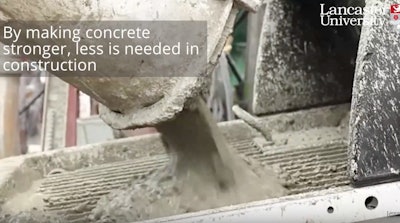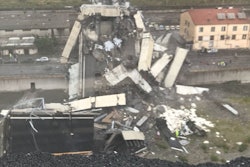 Screen shot.
Screen shot.Engineers at Lancaster University in the United Kingdom have partnered with Cellucomp Ltd UK to research how concrete mixtures can be made stronger and more environmentally friendly by adding ‘nano platelets’ extracted from the fibers of root vegetables, such as carrots. The university reports that the two-year research project received £195,000 from the European Union’s Horizon 2020 funding to expand on findings from previous tests that showed nano platelets from sugar beets or carrots improved the mechanical properties of the concrete.
According to the university, the nano platelets concrete mixes out-performed all commercially available cement additives, such as graphene and carbon nanotubes, at a much lower cost. The root vegetable nano platelets increase the amount of calcium silicate hydrate — the main substance that controls the performance of concrete and stops cracks from appearing.
Professor Mohamed Saafi, lead researcher from Lancaster University’s Engineering Department, says he believes root vegetable concrete could reduce construction carbon emissions. “These novel cement nanocomposites are made by combining ordinary Portland cement with nano platelets extracted from waste root vegetables taken from the food industry,” he said, according to the university. “The composites are not only superior to current cement products in terms of mechanical and microstructure properties, but also use smaller amounts of cement. This significantly reduces both the energy consumption and CO2 emissions associated with cement manufacturing.”
The vegetable-concrete composites also have a denser microstructure, which helps prevent corrosion and increases the lifespan of the materials. Researchers are also looking at adding thin sheets made from vegetable nano platelets to existing concrete structures to reinforce them. They believe the sheets will out-perform existing alternatives, such as carbon fiber, because concrete beams reinforced with the sheets will be able to bend more to help deflect potentially damaging forces.
“We are excited to be continuing our collaboration with Professor Saafi and developing new applications for our materials, where we can bring environmental and performance benefits,” said Dr. Eric Whale from Cellucomp Ltd., according to the university.













